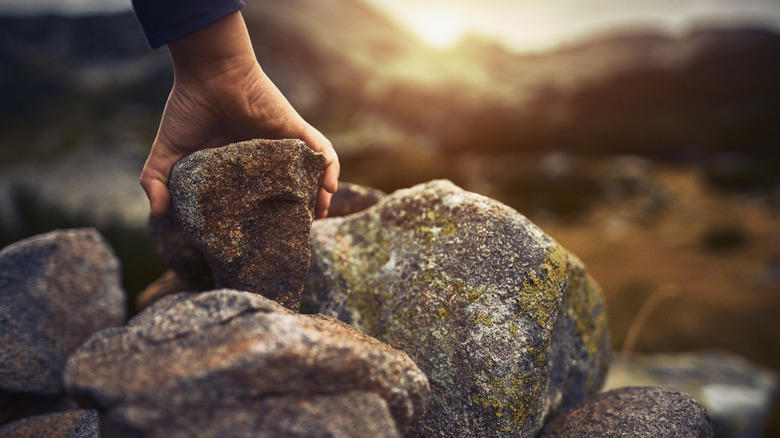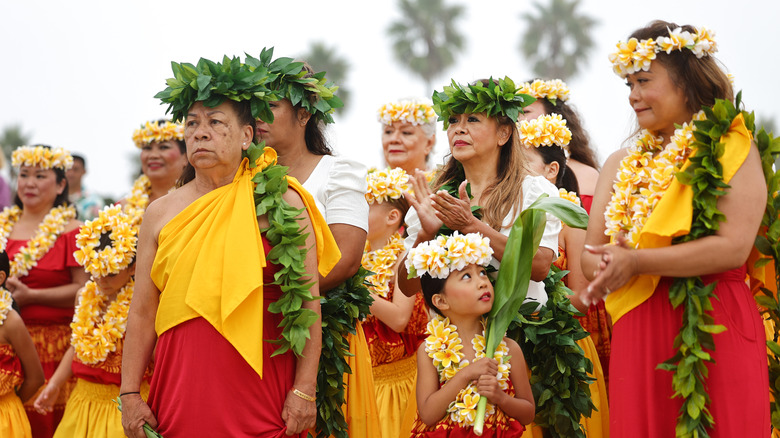Why Tourists On A Vacation To Hawaii Should Never Take A Rock Back Home
We know — it's tempting. You see a rock just sitting there, and you could easily pick it up. Stuff it in your backpack; take it home. It's so small! Who would even know? Is there really a shortage of rocks on this volcano? Every time you entertain guests, you could point to your hearth where the little igneous souvenir sits and say, "Did I tell you about this one? It's from Kīlauea Iki in Hawaii. Such an amazing hike!"
Please, resist. If you visit Hawaii and explore any of its nine national parks, don't take that rock or anything else. Leave everything exactly the way it is. You probably know this already. You may have heard the old national parks adage: "Take only pictures, leave only footprints." We understand how inflexible and bureaucratic this rule may seem. A rock, seriously? Well, yes. The National Park Service is very serious, even in the lava fields of Hawaii. This is one of the more critical mistakes tourists can make while visiting a national park.
It's not just the "leave no trace" policy. Many Indigenous Hawaiians feel a spiritual connection to their islands, a very real belief that the land is sacred and the volcanoes contain divine power. On the one hand, walking away with a memento erodes the landscape and disturbs its natural order, which can cause serious cumulative damage in the wake of thousands of misbehaving tourists. Just as importantly, travelers who take stones are effectively robbing a venerated space. It would be like chiseling a stone off of Notre Dame Cathedral and keeping it as a conversation piece.
Respecting Hawaii's land and people
Hawaii casts a particular spell on visitors. These 137 islands are bigger and more complex than many people realize, and first-timers often struggle to comprehend the diverse climate zones and spectacular biodiversity of this remote Pacific island chain. Hawaii conjures images of lūʻaus, hula dances, surfboards, and flowery leis – quaint symbols of an easygoing island paradise.
Yet all these things derive from serious Indigenous practices, and over 300,000 residents are considered Native Hawaiians, with even more living throughout the rest of the country (per the U.S. Census Bureau). As a general rule, respectful visitors should brush up on their etiquette before touching down at Honolulu's Daniel K. Inouye International Airport and engaging with this vibrant community. Little by little, mainstream Americans are becoming more aware of Pacific Islanders, as well as the seriousness and reference points of Polynesian beliefs.
The still-very-active volcanoes of Hawaii hold a special place among many Hawaiians; volcanoes aren't just lava-spewing mountains, but places of ceremony and communion. So go ahead and admire that rock from afar. It's resting exactly where it should be, and you can leave it for the next hiker to enjoy. Meanwhile, volcanoes and beaches aren't everything; here's a list of underrated attractions to add to your Hawaii bucket list.

